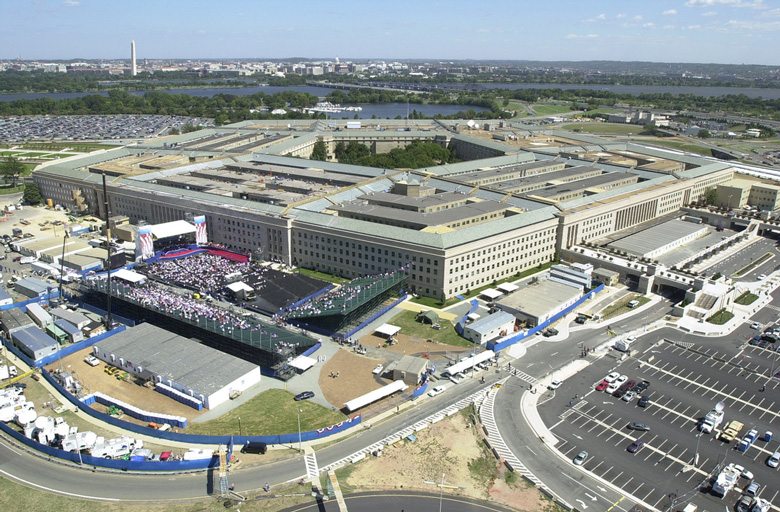One after another yesterday in a hearing before a House panel, the nation’s service chiefs described how severe budget cuts required by law in fiscal year 2014 would slash their forces, capabilities and readiness and raise security risks to the American people.
The House Armed Services Committee heard testimony on planning for sequestration in fiscal 2014 from Army Chief of Staff Gen. Ray Odierno, Chief of Naval Operations Adm. Jonathan W. Greenert, Air Force Chief of Staff Gen. Mark A. Welsh III and Marine Corps Commandant Gen. James F. Amos.
Sequestration is the name for a decade-long series of severe budget cuts mandated by the Budget Control Act of 2011 that amount to $470 billion taken from defense spending in addition to an equivalent cut that already was planned.
In fiscal 2013 the cuts, implemented only in the last half of the year and leading to six furlough days for DOD civilian employees, were $37 billion. In fiscal 2014 they are estimated to be $52 billion.
It is imperative to preserve the range of strategic options for the commander in chief, the secretary of defense, and Congress, Odierno told the panel.
“Together,” the general said, “we must ensure our Army can deliver a trained and ready force that deters conflict but when necessary has the capability and capacity to execute a sustained successful major combat operation. The Budget Control Act with sequestration simply does not allow us to do this.”
If Congress does not act to mitigate the magnitude and speed of reductions with sequestration, Odierno said, the Army will not be able to fully execute requirements of the defense strategic guidance issued in 2012.
By the end of fiscal 2014, the Army will have significantly degraded readiness, as 85 percent of active and reserve brigade combat teams will be unprepared for contingency requirements, he said.
From fiscal 2014 to fiscal 2017, as the Army continues to draw down and is restructured into a smaller force, its readiness will continue to degrade and modernization programs will experience extensive shortfalls, the general added.
“We’ll be required to end, restructure or delay over 100 acquisition programs, putting at risk the ground combat vehicle program, the armed aerial scout, the production and modernization of our other aviation programs, system upgrades for unmanned aerial vehicles, and the modernization of air defense command-and-control systems, just to name a few,” Odierno told the panel.
Only in fiscal 2018 to fiscal 2023 will the Army begin to rebalance readiness and remodernization, the general said, but this will come at the expense of significant reductions in the Army’s number of soldiers and its force structure.
The Army will be forced to take further cuts from a wartime high of 570,000 soldiers in the active Army, 358,000 in the Army National Guard and 205,000 in the Army Reserve to no more than 420,000 in the active Army, 315,000 in the Army National Guard and 185,000 in the Army Reserve, the general said.
This represents a total Army end-strength reduction of more than 18 percent over seven years, a 26 percent reduction in the active Army, a 12 percent reduction in the Army National Guard and a 9 percent reduction in the Army Reserve, he explained, adding that it also will cause a 45-percent reduction in active Army brigade combat teams.
“In my view, these reductions will put at substantial risk our ability to conduct even one sustained major combat operation,” Odierno said.
Today’s international environment and its emerging threats require a joint force with a ground component that has the capability and the capacity to deter and compel adversaries who threaten our national security interests,” he said. “Sequestration severely threatens our ability to do this.”
The Army is increasing its investment in the cyber domain, however, the general said, adding at least 1,800 people to that effort.. And noting that the Army provides intelligence not only for the Army, but also for the broader strategic and operational force — he said Army officials are reviewing how they do that, but that the primacy of what it does in the intelligence community will not change.
In his comments to the panel, Greenert said sequestration also would reduce readiness in the Navy’s preparations for fiscal 2014, its impacts realized mainly in operations and maintenance and in investments.
“There are several operational impacts, but the most concerning to me is that reductions in operations and maintenance accounts are going to result in having only one nondeployed carrier strike group and one amphibious ready group trained and ready for surge operations,” Greenert said.
“We have a covenant with the global combatant commanders and the national command authority,” he told the panel. “We provide carrier strike groups forward ready on deployment, and that’s generally two. We have two to three, generally three, ready to respond within about 14 days. And then we have about three within 60 to 90 days. That’s what we’ve signed up to. That’s called the fleet response plan. That has to change now.”
The Navy also will be forced to cancel maintenance, inevitably leading to reduced life for ships and aircraft, he said, adding that the service will conduct only safety-essential renovation of facilities, further increasing the maintenance backlog.
The Navy probably will be compelled to keep a hiring freeze in place for most of its civilian positions, Greenert added, affecting the spectrum and balance of the civilian force.
Because the Navy will not be able to use prior-year funds to mitigate sequestration cuts in its investment accounts as it could in fiscal 2013, without congressional action it will lose at least a Virginia-class submarine, a littoral combat ship, and an afloat forward-staging base, the admiral said.
“We will be forced to delay the delivery of the next aircraft carrier, the Ford, and will delay the mid-life overhaul of the George Washington aircraft carrier. Also we’ll cancel procurement of 11 tactical aircraft,” he noted.
Greenert said the Navy needs to transfer $1 billion into its operations and maintenance account by January and $1 billion into its procurement accounts post-sequestration to get shipbuilding back on track and to meet its essential needs.
“Other deliveries of programs and weapon systems may be delayed regardless,” he added, “depending on the authority that we are granted to reapportion funds between accounts.”
On the topics of nuclear deterrence and cyber, Greenert said, “My job is to provide strategic nuclear deterrence, safe and credible, No. 1. Right behind that is cyber. … We are staying the course on our cyber warrior plan that we’ve briefed in here. Through any budget scenario … we have got to maintain that.”
In his remarks, Welsh emphasized the danger of having to choose between a ready force today, or a modern force tomorrow. He told the panel that if sequestration stays in place in fiscal 2014, the Air Force will be forced to cut flying hours by up to 15 percent.
“Within three to four months, many of our flying units will be unable to maintain mission readiness,” he said. “We’ll cancel or significantly curtail major exercises again, and we’ll reduce our initial pilot production targets.”
Over the long term, sequestration will significantly affect the service’s force structure, readiness and modernization, Welsh said, adding that over the next five years the service could be forced to cut up to 25,000 total force airmen, or about 4 percent of its people.
“We also will probably have to cut up to 550 aircraft, about 9 percent of our inventory,” the general said. “And to achieve the necessary savings in aircraft force structure, we’ll be forced to divest entire fleets of aircraft.”
To determine the proper force structure, the Air Force will prioritize global, long-range capabilities and multirole platforms needed to operate in a highly contested environment. Other platforms will be at risk, the general said.
“We plan to protect readiness to the maximum extent possible [and to] prioritize full-spectrum training, because if we’re not ready for all possible scenarios, we’ll be forced to accept what I believe is unnecessary risk, which means we may not get there in time, it may take the joint team longer to win, and our people will be placed at greater risk,” Welsh added.
Air Force modernization and recapitalization forecasts will be bleak if sequestration continues, he said, affecting every program.
“We will favor recapitalization over modernization whenever that decision is required,” he said. “That’s why our top three acquisition priorities will remain the KC-46, the F-35, and the long-range strike bomber.”
The U.S. Air Force is the best in the world and a vital piece of the world’s best military team, the general said, “but the impacts are going to be significant, and the risk occurs from readiness in the ways it impacts our airmen.”
In his remarks to the panel, Amos said that for the Marine Corps to meet requirements of the defense strategic guidance it needs 186,800 active-duty Marines to meet steady-state requirements, go to war, and preserve a 1-to-3 ratio of deployed time to home-station time for Marines.
“Our share of the 2011 Budget Control Act’s $487 billion reduction cut our end strength to 182,000,” he said. “Based on sequestration, I simply cannot afford a force that size.” Sequestration will force the Marines to plow through scarce resources, funding old equipment and weapon systems to try to keep them functional, the general said.
The Marines will be forced to reduce or cancel modernization programs and infrastructure investments to maintain readiness for deployed and next-to-deploy units, he said. Money that should be available for procuring new equipment will be rerouted to maintenance and spare accounts for legacy equipment, including a 42-year-old Nixon-era amphibious assault vehicle, he added.
In February, the Marines initiated a parallel study to the Defense Department’s Strategic Choices and Management Review, Amos said.
“Our exhaustive research, backed by independent analysis, determined that a force of 174,000 Marines is the smallest force that can meet mission requirements. This is a force with levels of risk that are minimally acceptable,” he said.
“For instance,” he added, “assuming that global requirements for Marine forces remain the same over the foreseeable future, a force of 174,000 will drive the Marine Corps to a 1-to-2 dwell –[ratio] for virtually all Marine units — gone six months, home 12 months, gone six months.”
A force of that size accepts risk when the nation commits itself to the next major theater war, Amos said. The Marines would have 11 fewer combat arms battalions and 14 fewer aircraft squadrons.
“This is a single Marine major contingency operation force that would deploy and fight until the war’s end,” the general said. “In other words, we would come home when the war was over.”
Marines who joined the corps during that period likely would go from drill field to battlefield, he added. Across the joint force, America would start to see shortfalls in the military’s ability to accomplish its national strategy.
“Today we are seeing only the tip of the iceberg,” Amos said. “Tomorrow’s Marines will face violent extremism, battles for influence and natural disasters. Developing states and nonstate actors will acquire new technology and advanced conventional weapons that will challenge our ability to project power and gain access.”
To be effective in the new environment, he said, Marines must maintain their forward influence, strategic mobility, power projection, and rapid response capabilities they are known for today.










